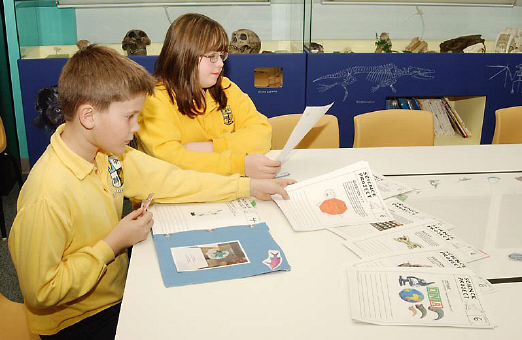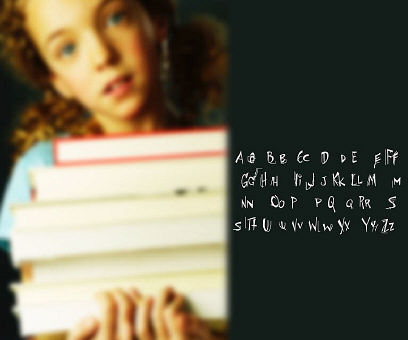BRAIN RESEARCH
 The following information is taken mainly from the book The Owner’s Manual for the Brain by Pierce J. Howard Ph.D. In my opinion, those interested in knowing scientific information about the brain must start with the contents of this book. The Owner’s Manual for the Brain is an authoritative text that covers a multitude of topics in simple language.
The following information is taken mainly from the book The Owner’s Manual for the Brain by Pierce J. Howard Ph.D. In my opinion, those interested in knowing scientific information about the brain must start with the contents of this book. The Owner’s Manual for the Brain is an authoritative text that covers a multitude of topics in simple language.
This volume presents pertinent, interesting, fascinating, and thought provoking information. The book has sections that inform about: the anatomy of the brain; habits to increase brain’s potential; the effect of food, exercise, and attitude on the brain functions; the relevance of individual differences; and mental processes, among several other things.
I will include a few more pieces of information now and then. I hope you find this section interesting, stimulating, and useful. If you ever do apply any of these ideas, please let me know what happened. I would love to learn from you, too.
Mr. Flores
 HOW WE LEARN
HOW WE LEARN
Learning is a complex endeavor. It is an activity that demands the conjunction of multiple skills. For the act of learning to happen, some conditions are necessary. Common knowledge tells us that paying attention, focusing on the task, practicing, and reviewing are all part of the learning process. However, all of these activities are only a part of the learning activity.
To start randomly with what brain researchers say, lets see how we memorize a list of things. How many times we have struggled memorizing lists of items: names, groceries, telephones, etc? In 1956 G. A. Miller demonstrated that seven new and previously unassociated bits of information are about as much as most people can work with. There are gifted individuals whose memories seem photographic, but most of us posses brains that work according to Miller's discoveries. With this in mind, when learning or teaching a list of ten or more items it is recommended that:
- Reduce the list to nine or fewer items (preferably seven)
- Break the list into two with seven or less chunks each. Master the first list before going to the second. (A chunk is a group of disassociated pieces of information, like a phone number)
- Take a longer list of say fifteen to twenty items and reduce it to about seven shorter lists by identifying categories and subcategories. Work on the seven main categories until they have been mastered, and then work on the subcategories. This system would come in handy when memorizing names of animals.
- For verbal passages start with the first five to nine works or chunks, and continue with the next five to nine words or chunks. Then put them all together.
 TESTING: AN OPPORTUNITY TO LEARN
TESTING: AN OPPORTUNITY TO LEARN
Basically, a test serves the purpose of giving a grade according to a predetermined standard. It indicates if a student has achieved different levels of proficiency, or failed to do so. However, from the learning point of view is much more than that. Testing gives the student an opportunity to practice several effective learning procedures simultaneously. Interestingly enough, tests don’t have to be punitive to be effective learning tools. Actually, it is the act of taking the test that is helpful!
There are different kinds of tests: true or false, multiple choice with factual or inferential questions, performance, etc. L.A. Hart (1983) argues that nondirective tests are superior to directive tests (such as multiple choice and true or false exams) because learners have to identify patterns and select programs.
In helping students to learn, parents and teachers may:
1. Use the beginning of a class or preparing for a test by reviewing content from previous sessions
2. Use group competition in tests.
3. Ask students to construct a test to give to other groups. (Parents can ask children to come up with a test for them.)
4. Choose questions that ask for identifying patterns or clarifying questions, rather than simply ask for factual information.
 CHOOSING READING MATERIALS
CHOOSING READING MATERIALS
Aside from the content of the books, style and organization are two factors to consider when choosing a reading material. A book that offers concrete details and visual descriptive passages is more effective in making material interesting than a book with amusing anecdotes and sidebars. The reason for the effectiveness lays in the reaction of the reader to the material. The former makes the material more enjoyable and understandable, while the latter distracts the reader from pursuing information in depth.
The organization of the material impacts learning importantly. Low-knowledge readers learn better from well organized texts, while high-knowledge students learn better from loosely organized texts that do not spell everything out. This distinction has important implications for parents and teachers alike. If a student has not developed good fluency and comprehension, well organized books are in order. For capable readers, simple books may seem boring, while challenging ones may look appealing to them.
 SCHEMAS
SCHEMAS
Schemas have to do with our experiences and knowledge. The story of our mental life is the story of forming new schemas or accommodating new experiences to old schemas. Learning is about schemas. Think how different it is to learn geographical concepts to someone who has never traveled, in comparison to someone who has been an assiduous traveler. Or, how much easier is to learn the concepts of standard and metric systems to someone whose family members work as mechanics or carpenters, as opposed to someone who has never been around such experiences. Schemas are fundamental in the process of learning. According to this theory, the more schemas a person possesses, the easier is to relate to new material, concepts, and knowledge.
If parents or teachers want to help a student in the process of learning, they may:
1. Before teaching anything, find out how much the learner knows about the subject. For instance, if a student cannot recognize nouns, it would be advisable to review them before teaching singular, plural, common or proper nouns. Or, if a person has not mastered the concept of multiplication, it would be recommended to review it before teaching division.
2. In order to maximize learning potential, it is recommended to plan multiple activities and experiences related to the learning objective.
3. Participating actively in activities at home, school, church, sport teams, hobbies, etc., builds up schemes that may be useful in learning anything. Possessing a variety of schemes facilitates the acquisition, comprehension, and memorization of new material.
 DO WE LEARN BY DOING OR BY STUDYING?
DO WE LEARN BY DOING OR BY STUDYING?
In 1994 Seymour Epstein identified two modes of learning: experiential and rational. One person may be stronger in one mode than another, but at no point neither one excludes the other. This finding implies a simple advice for anyone who teaches: the more use of both modes, the better the chances of achieving students’ learning. Scientists explain that the experiential mode is more right-brained, while the rational mode is more left-brained. In any case brain researchers suggest that:
1. When you teach, make sure your teaching includes a balance of experiential and rational learning strategies. For instance, in order to learn new words, one can learn the definition (rational) and tell a story about it (experiential). Or, when explaining fractions, one can explain what fractions are, but also provide experiences dividing cakes, pizzas, money, etc.
2. Every activity a student performs, he should talk about it.
3. For every lecture, perform an experiment. If you are talking about Thanksgiving, ask inferential questions regarding related history, geography, or any relevant piece of information.
 WHAT WE EAT INFLUENCES OUR GENERAL HEALTH AND HENCE OUR BRAIN!
WHAT WE EAT INFLUENCES OUR GENERAL HEALTH AND HENCE OUR BRAIN!
In 1989 The National Research Council published a report entitled Diet and Health, in which the researchers found that Americans eat excesively amounts of fat (dairy, meat, oils), simple carbohydrates (sugars), and protein (meat, legumes) and insuficient amounts of complex carbohydrates (vegetables, garins, fruits). In addition, they found out that taking dietary supplements beyond the recommended daily allowance have no benefits and may be toxic. Overeating and exceeding on the daily amount of nutrients do not benefit health; these conditions actually deteriorate health and create other undesirable health problems, like obesity. The suggestion for overweight people and for those fanatics of health products may be to consult a doctor and to develop more efficient habits.
In 1996, the Scientific American magazine reported that in an study conducted in Central America with two thousand children, a well balanced diet with calories, protein, vitamins, and minerals, produced a reverse in poor academic performance. But the harm this condition of undernourishment causes does not stop with poor academic results. Other researchers observed that undernourishment "significantly lessened social interaction." These findings force us to reevaluate the schools in underprivileged areas: "For children in poverty, academic intervention alone is not enough to improve performance. they need protein and calories as well as instruction and caring." Any school effort to improve the academic performance of students with deficient diets, should be accompanied by a community effort to improve the diet of their students.
Since it is important to keep a healthy body in order to develop a healthy mind, we all should be more conscious about our dietary habits. The first and most important advice for everyone is to consult a physician. Doctors can prescribe the appropriate diet and follow up on a sensible program. Researchers recommend to follow some safe suggestions. Here are some:
1. The carbohydrates found in cereals, grains, vegetables, and fruits can be used to increase physical activity and reduce anxiety.
2. The choline in nuts and cashews, egg yolks, liver, and soybeans can be used to increase mental clarity.
3. Ensure that sugary foods do not replace healthy foods. Reducing the consumption of sodas, and sweets may be a good start.
4. Control the intake of salt. Sodium causes hypertension and hearth problems, and creates electrolyte imbalances and mental dysfunction.
5. For optimal results, take vitamin supplements when eating foods, and mineral supplements between meals.
6. Replace canned foods with fresh ones and use fresh juice immediately.
7. Avoid foods with additives (artificial sweeteners, monosodium glutamate, preservatives, artificial colors and flavors, and aluminum-based additives) as much as possible. These substances cause reactions such as: short attention span, fidgeting, aggressiveness, excitability, impulsivity, a long frustration threshold, clumsiness, and insomnia.
Home
 The following information is taken mainly from the book The Owner’s Manual for the Brain by Pierce J. Howard Ph.D. In my opinion, those interested in knowing scientific information about the brain must start with the contents of this book. The Owner’s Manual for the Brain is an authoritative text that covers a multitude of topics in simple language.
The following information is taken mainly from the book The Owner’s Manual for the Brain by Pierce J. Howard Ph.D. In my opinion, those interested in knowing scientific information about the brain must start with the contents of this book. The Owner’s Manual for the Brain is an authoritative text that covers a multitude of topics in simple language.  HOW WE LEARN
HOW WE LEARN TESTING
TESTING CHOOSING
CHOOSING  SCHEMAS
SCHEMAS DO WE LEARN BY DOING OR BY STUDYING?
DO WE LEARN BY DOING OR BY STUDYING? WHAT WE EAT INFLUENCES OUR GENERAL HEALTH AND HENCE OUR BRAIN!
WHAT WE EAT INFLUENCES OUR GENERAL HEALTH AND HENCE OUR BRAIN!